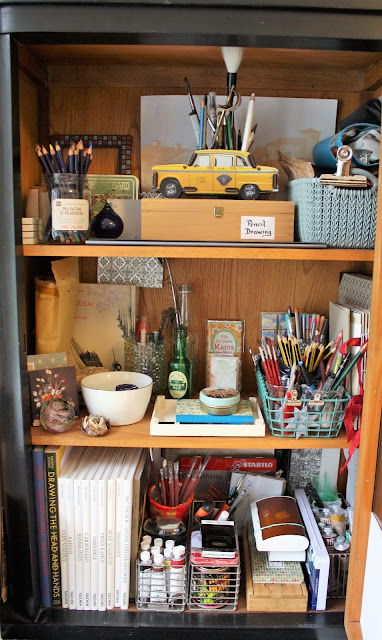Artists for Future
Climate neutral, climate change, preservation of nature, zero waste, sustainable... What ever the driving ideology, there has been a gradual yet constant increase in sensitivity to the impact of both natural and human factors contributing to the decline in a healthy ecosystem. Certainly globalization has factored into this increased awareness as have specific and unique projects carried out by individual people and organizations. In the past few years I have observed a shift in popular opinion on these issues, they have become no longer the issues of the green party, eco friendly hippies or other passionate nature lovers. They have become more central to the mindset of the average middle class person.
With a view toward ebbing the flow of consumption and waste people try to make more mindful choices about what and how they buy. What they throw away and what can be substituted. In school children learn about seperating garbage, recycling, and the protecting nature. They are taught about lowering one's carbon footprint and how to upcycle. These are not new ideas. They served our grandparents well, they are utilized by poorer segments of society, large families, and single parents, and of course they are still quite normal in many parts of the world. Yet for western middle class society they have slipped by the wayside as affluence and convenience took center stage. To make a middle age salary yet live like the rich, with access to everything has allowed many people to turn a blind eye to the side affects of some of what has become 'normal', over night shipping, cheap flights, and constant internet, just to name a few. However, our children are growing up and looking critically at our luxuries through the lens of the values we have taught them and they want to see a change. Greta Thunberg is perhaps one of the most famous examples of the attitude that enough is enough and things need to change. But although internationally recognized, young people everywhere are taking a step back and reevaluating their life styles. 2 years ago a cute 'vintage' tee shop was opened in our town. While talking to the owners I discovered that not only are all of their tee cups and tea pots vintage but their furniture is as well. The retro tables and chairs have been sanded down and repainted or reupholstered. Nothing is grungy or run down yet nothing is new. They believe that 'everything' they is already in existence and must simply be located and updated. They run a clean, tidy, and charming establishment but they try not to consume new things.Today I ran into a young doctor in town who showed my two beautiful leather handbags she had just bought at a flee market. Times are changing and slowly the older generation is getting on board.
This past week I saw that a few architects had put signs in their windows reading, 'Architects for Future'. And midweek I was invited to join a group of Artists in an 'Artists for Future' event. I wasn't sure what it would entail but grabbing two paintings from my studio, jumped in the tram and headed into town to join them.
Situated outside a centrally located gallery about eight artists had set up their paintings on a series of easels. Signs lay on the ground along the stretch of sidewalk pulling the attention of the flow of people upward as they hurried past.
The artists were a mixed group, some, like myself, obviously were there out of solidarity, some because they wanted to participate in a good cause, and one or two who were true activists. The event lasted a couple of hours and several people slowed down or stopped to look at the paintings and ponder.
However, it got me thinking; Artists for Future must be more than standing on the street reminding people that things are bad. People know things are bad. Wouldn't it be great if artists for Future would hold exhibitions with quality art work composed of reused elements or ethically sourced supplies. Do we know where our pigments come from? DO we know where our paper is made, do we order things from other countries via amazon that could be obtained with very little difficulty from our local art shops? There are many artists who do those things, Anita Lili Haxhija creates beautiful multimedia pieces from up cycled items, Jyotsna Pippal from Lost in colours creates her own colours using natural pigments.
Now all this is not to say that there is not great value in taking advantage of the expertise of manufacturers who have been leaders in their fields for decades or even generations. Fabriano, for example creates beautiful paper. My favorite paper. I don't plan on changing paper companies, yet there are so many small ways to reflect on minimizing waste and considering responsible sourcing techniques.
Are you an artist? Is sustainability, ethical sourcing, or eco-friendliness a part of your process? I would love to hear in the comments.
Bonus:
Check out my lovely song birds painted on vintage sheet music and printed locally at a family run printing press:
To get posts as soon as they are published click on the subscribe button at the top of the page or Follow by clicking on the follow button.

























Comments
Post a Comment